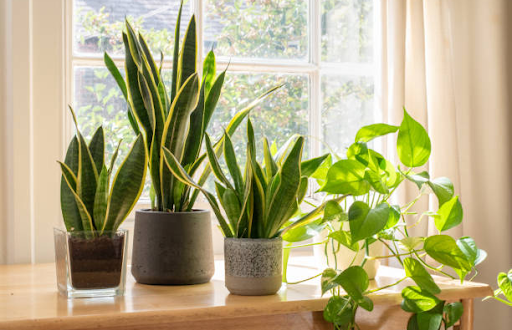For busy individuals, caring for indoor plants can seem like an overwhelming and time-consuming task. However, incorporating low-light indoor plants into your living and working spaces can have many benefits, and require less attention than some high-maintenance varieties. In this blog post, we will explore the benefits of low-light indoor plants for busy plant parents, introduce some easy-to-care-for varieties, and provide tips for their maintenance and care.
Low-light indoor plants for busy plant parents
- Snake Plant: This plant can thrive in low-light environments and only needs to be watered every 2-6 weeks. It is also known for its air-purifying properties.
- ZZ Plant: Another low-light and low-maintenance option, this plant can go weeks without watering and requires minimal attention to thrive.
- Pothos: This trailing plant is a great option for those looking to add a touch of greenery to their space. It can tolerate low-light conditions and only needs watering once a week.
- Peace Lily: This plant can grow in low-light environments and is also known for its air-purifying properties. It only needs to be watered once a week and can go longer without water in cooler temperatures.
These plants are really beneficial for your home and office and they are easy to care for. You can these plants anywhere at local nurseries or you can buy them online at the Kyari website
The benefits of low-light indoor plants
Having plants in your living and working spaces can have many benefits, including physical and mental health benefits. Low-light indoor plants can provide these benefits without the added time and effort required for high-maintenance varieties.
- Stress-reducing: Studies have shown that simply looking at plants can reduce stress levels and promote relaxation. This can be especially helpful for those with busy schedules and high-stress levels.
- Air-purifying: Low-light indoor plants can improve air quality by removing pollutants and toxins from the environment. This can lead to better respiratory health and overall well-being.
- Productivity-boosting: Research has shown that having plants in the workplace can improve productivity and concentration. This can be especially beneficial for busy individuals who need to stay focused and efficient throughout the day.
Maintenance and care for low-light indoor plants
Caring for low-light indoor plants is relatively easy and requires minimal effort, making them a great option for busy plant parents. Here are some tips for their maintenance and care:
- Watering: Low-light indoor plants generally require less water than those in brighter environments. Be sure to let the soil dry out before watering to avoid overwatering.
- Fertilizing: Low-light indoor plants require less frequent fertilization than those in well-lit areas. Only fertilize once every 1-2 months.
- Cleaning: Regularly clean your plants to prevent dust from building up on the leaves. This will help the plants breathe and absorb light more efficiently.
- Self watering pots: You can use the self watering pots so that you don’t ever need to forget about watering the plants. These pots will automatically water the plants and keep them thriving
Creative ways to incorporate low-light indoor plants in your space
Incorporating low-light indoor plants in your living and working spaces can be a fun and creative way to add some greenery to your environment. Here are some ideas:
- Create a hanging garden: Hanging plants like pothos and spider plants are great for adding visual interest to your space while taking up minimal floor space.
- Use a plant stand: Elevating your plants on a stand can add height and dimension to your space.
- Create a terrarium: Terrariums are a great way to create a mini-ecosystem within your home or office.
Conclusion
Incorporating low-light indoor plants into your living and working spaces can have many benefits for busy plant parents. They require minimal effort and care and can provide stress-reducing, air-purifying, and productivity-boosting properties. Try adding some of the easy-to-care-for varieties mentioned above, and get creative with how you display them in your space. Your well-being and the health of your home or office environment will thank you.
One final tip to keep in mind when caring for low-light indoor plants is to pay attention to their individual needs. Just because a plant is labeled as low-light tolerant does not mean it will thrive in all low-light conditions. Be sure to research each plant’s specific requirements and make adjustments as necessary.
Incorporating low-light indoor plants into your busy lifestyle can be a great way to bring a touch of nature into your everyday routine. By providing numerous health and well-being benefits, these plants are a low-maintenance solution for those looking to add some greenery to their home or office. Try out some of the suggested plant varieties and watch as they bring a renewed sense of calm and focus to your space. Happy planting!
 HammBurg Be informed with latest news, reviews, entertainment, lifestyle tips, and much more.
HammBurg Be informed with latest news, reviews, entertainment, lifestyle tips, and much more.




